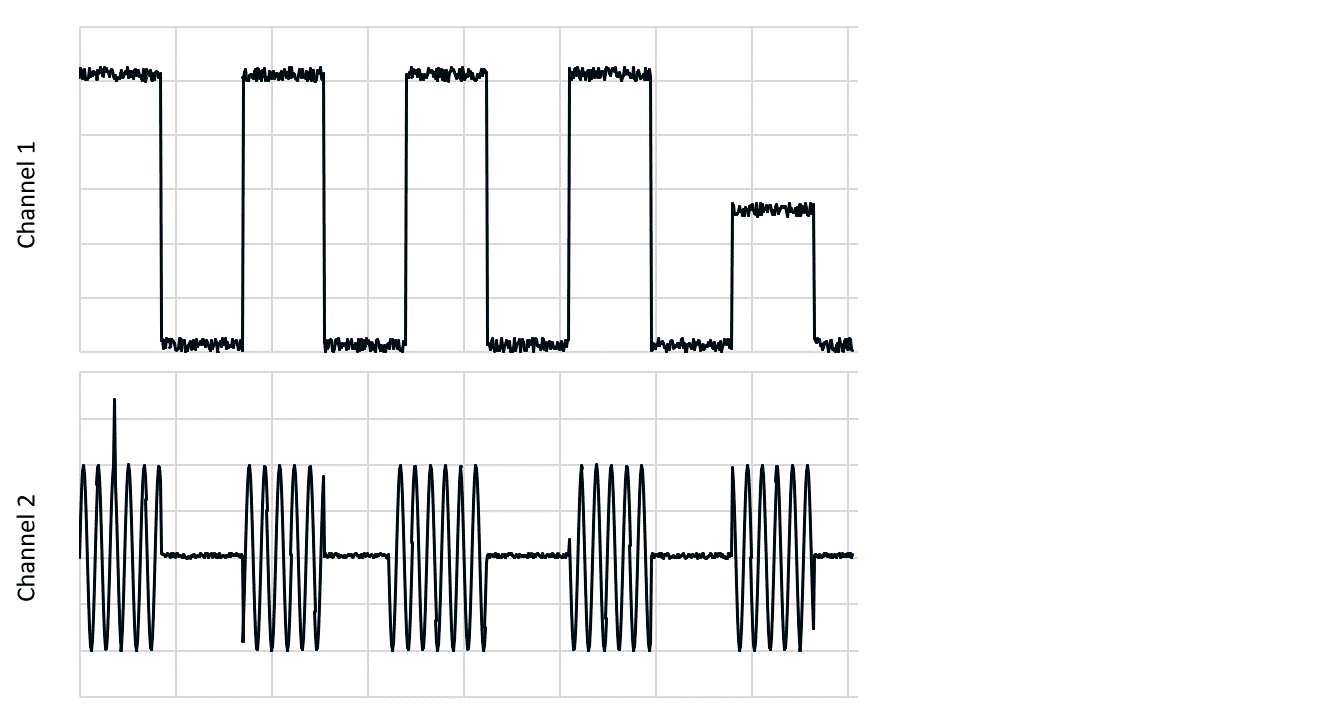There's a need for complex anomaly detectors
As engineering teams generate more and more data from their processes and systems, detecting anomalies accurately and early has become crucial. Traditional approaches often rely on monitoring single variables, which needs to be improved in the complex, interconnected systems typical of advanced engineering. This is where multivariate anomaly detection comes into play, offering a more comprehensive way to identify potential issues in test data.
Univariate anomalies
Univariate anomaly detection is a technique used to identify unusual patterns or outliers in a dataset by focusing on a single variable (or channel) over time. In this approach, the focus is solely on one variable, and any significant deviation from its expected behaviour or normal range is flagged as an anomaly.
For example, if you're monitoring the temperature of a system over time, univariate anomaly detection would involve tracking just that one variable - temperature - and identifying points where the temperature significantly deviates from what is considered normal, such as a sudden spike or drop.
This method is straightforward and valuable in situations where the behaviour of a single variable is critical to the system's performance or safety. It can often be implemented using simple rules (threshold values, drop, …). However, this local approach may miss more complex anomalies that involve interactions between multiple variables, which is why multivariate anomaly detection is often needed in more complicated scenarios.
Multivariate anomalies
In essence, multivariate anomaly detection involves analysing multiple variables simultaneously to identify patterns that deviate from the norm. This is particularly relevant in engineering applications where systems are often governed by numerous factors - such as temperature, pressure, vibration, and more. By considering how these variables interact at a global level, multivariate analysis can reveal anomalies that might be invisible if each variable were considered in isolation.
Let’s illustrate both types of anomaly detection in the figure below. Anomalies 1 and 2 can be identified by focusing on their respective channels only. On the opposite, the region of anomaly 3 doesn’t seem anomalous when only focusing on channel 1 or 2 (see green regions). It’s by looking at both channels at the same time that you can understand that there is an anomaly: the wavy pattern started channel 2 while channel 1 was still at a low value.

A real example: Battery thermal runaway events
Here are a couple of real-life examples. In a manufacturing process, slight deviations in temperature might seem manageable on their own. However, when combined with a subtle change in pressure and a slight delay in a machine's response time, these factors could indicate a developing fault. Multivariate anomaly detection is essential for capturing such complex interdependencies, enabling engineers to address potential issues proactively.
Now let’s look at a battery example and consider thermal runaway events:
- With a univariate approach, an event will be found when the temperature shoots above a maximum threshold. This might be too late.
- With a multivariate anomaly detector, you could predict the event to happen when there is a slight increase in temperature, not detectable if looking at the temperature only. This is because this slight temperature increase, coupled with a particular state of charge and voltage, will be flagged as anomalous, even though all individual channels operate in their desired range.
This second example also shows that the benefit of a multivariate approach is not just finding anomalies that would be missed otherwise. It can also find anomalies earlier than when relying on univariate anomaly detection.

Monolith’s multivariate approach: time-series auto-encoders
There are many ways to analyse your data in a multivariate way. At Monolith, we have developed a time-series auto-encoder to learn to reconstruct all signals together globally and use this reconstruction to detect anomalies. Once the signal is reconstructed, each time point is given an anomaly score. The importance and calculation of the anomaly score are detailed in another article.

Conclusion
In an increasingly complex engineering landscape, relying solely on univariate analysis is no longer sufficient. Multivariate anomaly detection offers a more comprehensive and accurate way to monitor and manage the performance of complex systems. The two main benefits will be (1) the detection of otherwise undetected anomalies and (2) the detection of anomalies at a much earlier stage, allowing for more time to intervene and make the needed corrections.
Start using AI to detect anomalies in your data today
Would you like to learn more about how the Monolith anomaly detection toolkit helps identify errors in your test data? Click on the link below to watch the full webinar that details:
- Sources of common data errors in testing and validation labs.
- The steps needed to train and apply the Anomaly Detector to find anomalies in your test data.
See the webinar preview below:

